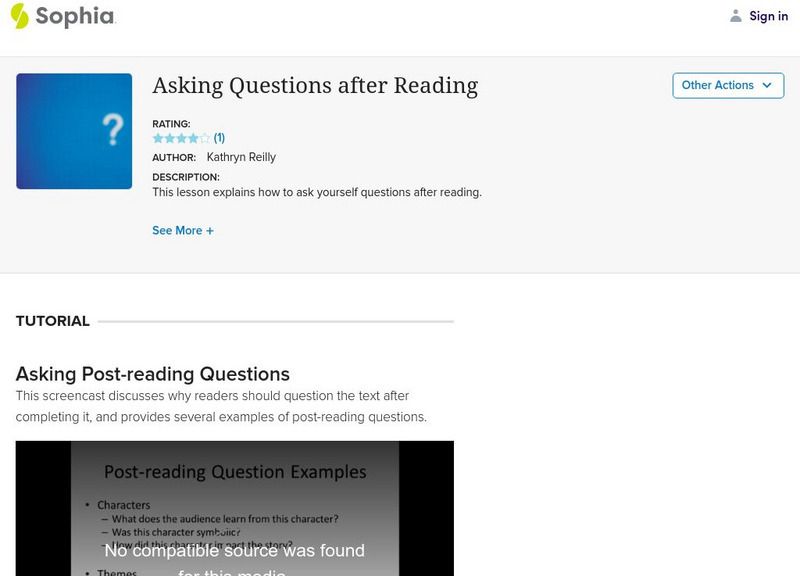PBS
To Kill, To Kill a Mockingbird?
One of the trademark texts of the American school system is Harper Lee’s 1960 novel To Kill a Mockingbird. For decades it has been widely read in high schools and middle schools as a key anti-racist text. But how did this novel, with its...
Crash Course
To Kill a Mockingbird, Part I - Crash Course Literature 210
In which John Green teaches you about Harper Lee's famous (and only) novel, To Kill a Mockingbird. John will cover a bit about Harper Lee's personal life, (seeing as this novel has some autobiographical elements) and her long association...
Curated Video
The real reason To Kill A Mockingbird became so famous
Find Overrated on Facebook here: https://www.facebook.com/OverratedTheShow/ In this episode of Overrated, Vox's Phil Edwards investigates the largely unheralded business reason behind the success of Harper Lee's "To Kill A Mockingbird."...
GradeSaver
To Kill a Mockingbird Video Summary
Visit us at www.gradesaver.com to read the full transcript and learn more about the classic novel: https://www.gradesaver.com/to-kill-a-mockingbird/study-guide/video To Kill a Mockingbird is a coming-of-age story as told by the main...
PBS
To Kill a Mockingbird Setting: A Portrait of a Southern Town in the 1930s
The characters of Harper Lee's To Kill a Mockingbird are formed and informed, in part, by the distinctive historical backdrop of Alabama during the Great Depression. Watch a video that details Lee's experience growing up in...
PBS
The Continuing Fight for Tom Robinson and To Kill a Mockingbird
To Kill a Mockingbird was published in 1960, but its messages remain just as true today as they were in Harper Lee's novel. Learners watch a video that details the story of Anthony Ray Hinton, who was sent to prison for a crime he...
PBS
Family and Identity through To Kill a Mockingbird
How does the Finch family structure set it apart from their community, even before Atticus begins defending Tom Robinson? Watch a video that discusses how Harper Lee's To Kill a Mockingbird establishes a distinctly American world...
Crash Course
Race, Class, and Gender in To Kill a Mockingbird
In the second video in a series about To Kill A Mockingbird, the narrator considers how Harper Lee uses the contrast between Scout's attitudes and those of the people of Maycomb to critique the ingrained southern attitudes toward race...
Crash Course
To Kill a Mockingbird, Part I
Harper Lee’s 1961 Pulitzer prize-winning novel To Kill A Mockingbird gets the Crash Course treatment in two short videos. The first quickly summarizes the plot and the conventions of Southern Gothic Fiction before examining what the...
Macat
An Introduction to Robert Putnam's Bowling Alone
How important is connectedness in a community? Bowling Alone: The Collapse and Revival of American Community by Robert Putnam details the early 21st century theory of the decreased value of social capital. A short analysis...
Crash Course
Holden, JD, and the Red Cap- The Catcher in the Rye Part 2
In Part 2 of a course on The Catcher in the Rye, the narrator examines J.D. Salinger's life and considers how the author's experiences during World War II may have influenced his portrayal of Holden Caulfield. How Salinger creates...
Sophia Learning
Sophia: Asking Questions After Reading
This screencast focuses on using post-reading questions to evaluate and improve understanding of a text. It offers general question ideas and a specific example of questions for "To Kill a Mockingbird" by Harper Lee. [3:37]










